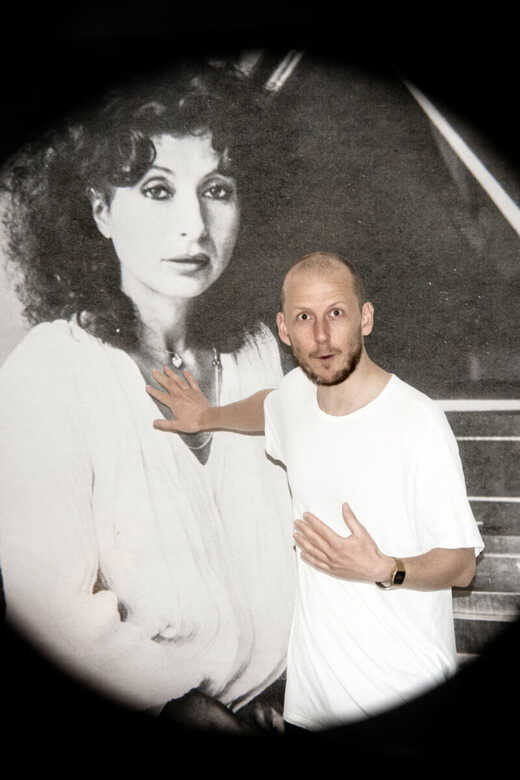A Letter from Venice
Rudi Meulemans
There are still some parts of Venice which I find very appealing. Quiet corners where one sees small canals with oddly constructed little bridges. Very, very, very narrow streets. Modest houses in long-faded colors. These parts can be found on the outskirts of the island, far from the crowds. You get the feeling that there, you truly are a stranger, away from it all, away from what is considered ‘normality.’
Most tourists tend to stay in the center, standing in awe before the glorious Basilica and the Doge’s Palace. And truly, Piazza San Marco is eye-blindingly magnificent, as are the artworks in the Scuola Grande di San Rocco, the Galleria dell’Accademia, and all the wonderful palazzi along the Canal Grande. Here, the city seems to be all about beauty and art. But actually, what all this really signifies is that this city was - and still is - about power.
I was in Venice to visit the Biennale Arte 2024, titled Foreigners Everywhere, curated by Adriano Pedrosa. The title already makes it clear that this exhibition is about artists who feel like, or are perceived as, strangers, encompassing a vast range of diversities that challenge traditional notions of normality.
It is no coincidence that Pedrosa is a queer curator from South America. He was born, lives, and works in Brazil, where he is the director of the Museu de Arte de São Paulo. For this exhibition, he selected artists from the Global South, Indigenous artists, queer artists, outsider artists - most of whom have never been presented at the Biennale before.
Before departing for Venice, I met a friend of a friend, an art historian, who had already been to this year's Biennale and said there was no ‘real art’ to be seen. I wasn’t sure what he meant. While in Venice, I ran into another art historian I know, who said he was very disappointed by the show. ‘Nothing there,’ he said. ‘Nothing of any quality. Nothing of any value.’ The next day, I visited the show and was overwhelmed by what I saw - because I felt at home. I felt at home among the foreigners, at home among the strangers. It was a good feeling.
Afterward, I asked myself if perhaps those white, male, heterosexual art historians who told me there was ‘no real art’ or ‘nothing of value’ had, for the first time in their lives, felt excluded - just as I have felt excluded for most of my life. Were they, while visiting Foreigners Everywhere, feeling uncomfortable? Something they, of course, would not admit to. They hide behind a certain taste - the taste of the art canon. But deep down, I think, they are afraid. Afraid of what is foreign to them. Afraid of what is strange. Afraid of what is queer. (When I say ‘queer,’ I am using the word in its original meaning of ‘strangeness.’) This Biennale showcases examples of marginalized, excluded, and oppressed beauty that have been erased by prevailing frameworks of geo-thinking. The art historian I met in the streets of Venice referred to these works as ‘activistic art,’ which he is not interested in. He does not recognize that what is shown is different from what he knows. It is not activism but is opposed to normativity.
The art historians I spoke with are clearly ‘normative people,’ meaning they support established norms, values, and standards within their culture. They see their way of life, their tastes, as the ‘norm’ and are not open to any form of living or art which is outside of that norm.
What I saw in the exhibition is not activism; it is artistic resistance. And it is beautiful and absolutely necessary in the changing world we live in.
Looking at the recent projects at GRIP and the upcoming projects for this season I can truly say that at GRIP we do not accept the normative. We embrace strangeness. It is an approach similar to Pedrosa’s study and research for the Biennale, where the thrill of the unknown is central to the process of exploration and enjoyment, and disorientation serves as a powerful tool for discovering new directions.
This is what I see as the common ground of the recent projects we have realized with GRIP. When I think about VOICE NOISE, Change of Plans, 324 mountains between us, DARKMATTER, and MEMBRE FANTÔME, I see artistic resistance, necessity, and beauty – a lot of beauty. I am also very pleased with the proposals from our choreographers for this season. In Torment of Hearts, Femke will not only dance to pieces from the canon, including Bach and Mahler, but also to works by Krieger and Henrik Lasure. With THE DOG DAYS ARE OVER 2.0, Jan will revive a piece that challenges the way we look at contemporary dance. In FRANK, Cherish will explore ‘the hybridity that we cannot comprehend, a threatening otherness.’ And, inspired by the principles of hauntology, Steven will create GHOSTBUSTERS. By all means: Foreigners Everywhere.
A Letter from Venice

 Met de steun van de Vlaamse Overheid
Met de steun van de Vlaamse Overheid

